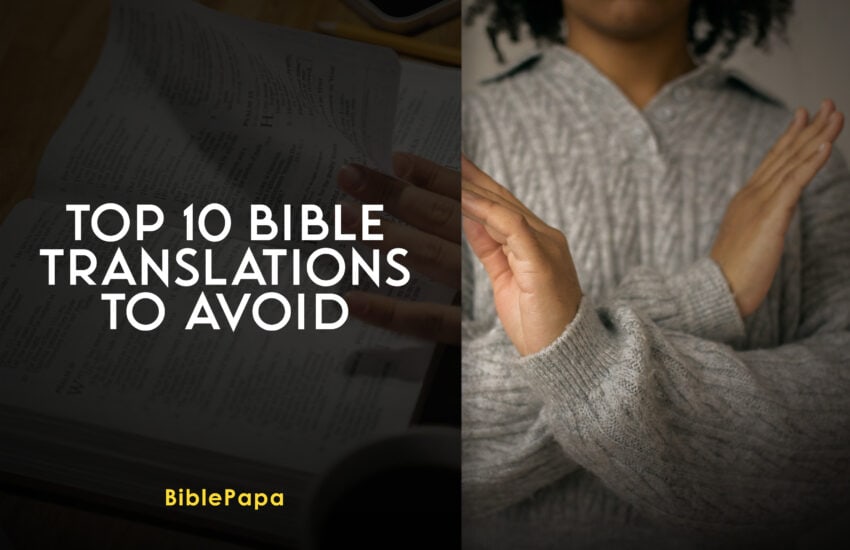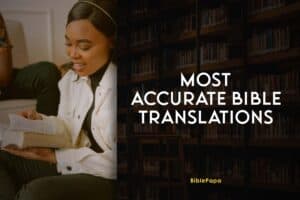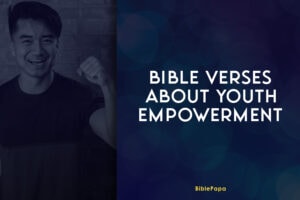There are several kinds of Bible translations that have been provided to give clarity of the scriptures but not all of them can give you the right understanding. Yes, you read that right.
The listed Bible translations to avoid when searching on the internet have been said to not agree with certain biblical beliefs and changes were made to suit their religious practice.
These Bible passages should not be read by individuals who don’t belong to a particular religion that differs from theirs. It is not for stereotype or segregation sake but for the fact that most of these translations become erroneous, losing virtue to God’s word and the message it passed across.
Overview of Bible Translation
The practice of interpreting Bible passages that have been written in a language other than their original text is known as Bible Translation.
The Bible was originally written in Greek, Hebrew, and Aramaic language but as the years passed by, qualified academics and religious authors began producing Bible transcripts.
There are different versions of the Bible;
- Good New Bible (GNT)
- New Living Translation (NLT)
- King James Version (KJV)
- New International Version (NIV)
The above-mentioned translations are well known to society, but there are a couple of other translations in this article you should avoid because they aren’t direct depictions of the actual image or message that the Bible tries to pass on from its original letters.
10 Bible Translations to Avoid
Here is a list of the Bible translations to avoid:
- The Clear Word Bible Translation
- New World Translation (NWT)
- The Passion Translation (TPT)
- The Message (MSG)
- The Living Bible (TLB)
- Queen James version Translation [QJV]
- The Septuagint Translation
- The Tyndale Translation [TYN]
- Masoretic Text Bible Translation
- Paraphraser Tool Translator.
Discussing Translations of the Bible that Should be Avoided
1. The Clear Word Bible Translation
The Clear Word is not a translation but a devotional paraphrase of Scripture expanded for clarity. It is intended to build faith and nurture spiritual growth.
The release of the Clear Word Bible brought a lot of controversies after several authors like Jack J. Blanco; former Dean of the School of Religion at Southern Adventist University reviewed some of the renderings that have a distinctly Adventist doctrinal spin when validated.
Nevertheless, if all those doctrinally driven anomalies were corrected, The Clear Word would still be useless for anyone who wants to know what the Bible says. The Clear Word is full of commentary material that has been blended into the text.
A lot of people use TCW as a Bible and not as a devotional paraphrase which is wrong. It is 100% paraphrased which has led to the misinterpretation of God’s words.
The Clear Word was initially printed by the Southern College Press of Southern Adventist University and sold in Church-owned Adventist Book Centers.
This version of the Bible is commonly used in the Seventh-day Adventist Church, even though it is not yet officially endorsed by the Church.
Major differences between The Clear Word and other Bible translations
Unlike other paraphrases, TCW is written in a verse-by-verse format instead of paragraphs. Misinterpretation of some words like “Lord’s day” was replaced with “Sabbath” as of in Seventh-day Adventist Church doctrines.
The Clear Word Translation Comparison with Accurate Bible Translations.
TCW: This earth began by an act of God. He created the heavens and the earth. The earth was only a mass of created matter floating in space, covered with a vapor garment. Everything was dark. Then the Holy Spirit hovered over the vapor, and God said, “Let there be light.” And everything was bathed in Light. (Genesis 1:1-3)
NASB: In the beginning God create the heavens and the earth. And earth was a formless and desolate emptiness, and darkness was over the surface of the deep and the spirit of God was hovering over the there was light. (Genesis 1:1-3)
KIV: In the beginning God created the heaven and the earth. And the earth was without form, and void; and darkness was upon the face of the deep. And the Spirit of God moved upon the face of the waters. And God said, Let there be light and there was light. (Genesis 1:1-3)
2. New World Translation (NWT)
New World Translation was published by Watchtower Bible and Tract Society (WBTS) as its first original translation of ancient Biblical Hebrew and Old Aramaic texts. The NWT was released in 1961 in over 210 Languages: It is used and distributed by religious affiliates like Jehovah’s Witnesses.
During the launch of the NWT Bible, WBTS stated that the New World Translation Committee requested that its member’s names should not be mentioned. In other words, nobody knows the clarity and qualifications of the members who translated the NWT.
It was later discovered that four out of the five translators who came forward did not have sufficient qualifications to translate the Bible, and they had no knowledge of any bible languages; Hebrew, Greek, or Aramaic. Only one of the translators knew the Bible languages needed to attempt Bible translation.
However, WBTS claimed that the NWT Holy Scripture was translated directly from Hebrew, Aramaic, and Greek into modern-day English by a committee of anointed witnesses of the Jehovah.
Before the release of NWT, Jehovah’s Witnesses in English-speaking countries primarily used the King James Version (KJV). WBTS decided to publish its version of the Bible because most of the Bible versions were translated into old languages.
Major differences between NWT and other accurate Bible translations
A lot of verses are missing in this Bible translation and new text was also added having different wording and NWT translated Greek words like Lord (Kurios) and God (Theos) to “Jehovah”. This does not identify the Lord Jesus Christ as a holy deity and part of the Trinity.
Inconsistent translation techniques in NWT refer to the ‘New Testament’ as the Christian Greek Scripture, and the ‘Old Testament’ as the Hebrew Scripture.
New World Translation Compared with Accurate Bible Translations.
NWT: In the beginning God created the heavens and the earth. Now the earth was formless and desolate, and there was darkness upon the surface of the watery deep, and God’s active force was moving about over the surface of the water. (Genesis 1:1-3)
NASB: In the beginning God create the heavens and the earth. And earth was a formless and desolate emptiness, and darkness was over the surface of the deep, and the spirit of God was hovering over the surface of the waters. Then God said, “Let there be light”; and there was light. (Genesis 1:1-3)
KIV: In the beginning God created the heaven and the earth. And the earth was without form, and void; and darkness was upon the face of the deep. And the Spirit of God moved upon the face of the waters. And God said, Let there be light: and there was light. (Genesis 1:1-3)
3. The Passion Translation (TPT)
The Passion Translation (TPT) is a modern paraphrased English translation of the New and Old Testament. It was published in 2017 by 5 Fold Media; although the current publisher is Broadstreet Publishing.
Dr. Brian Simmons; A pioneer in the ministry was the lead translator of The Passion Translation. His transcript denotes TPT as a modern, easy-to-read Bible translation that unveils God’s passionate heart and expresses his fiery love-merging emotion and life-changing truth.
TPT is entirely different from his description, this Bible translation is so different from other Bible translations. Truth be told, TPT doesn’t qualify as a literal translation of the Bible, so it’s more like a paraphrase and as such doesn’t qualify to be called a translation.
In early 2022, Bible Gateway removed TPT from its site. Bible Gateway is a Christian website designed to provide Bible in different versions and translations.
Major differences between The Passion Translation and other Bible translations
TPT was derived based on essential equivalence translation which Includes additions that are not found in the source manuscripts.
Passion Translation Compared with Accurate Bible Translations.
TPT: When God created the heavens and the earth, the earth was completely formless and empty, with nothing but darkness draped over the deep. God’s Spirit swept over the face of the waters. And the God announced: “Let there be light,” and light burst forth! (Genesis 1:1-3)
NASB: In the beginning God create the heavens and the earth. And earth was a formless and desolate emptiness, and darkness was over the surface of the deep, and the spirit of God was hovering over the surface of the waters. Then God said, “Let there be light”; and there was light. (Genesis 1:1-3)
KIV: In the beginning God created the heaven and the earth. And the earth was without form, and void, and darkness was upon the face of the deep. And the Spirit of God moved upon the face of the waters. And God said, Let there be light; and there was light. (Genesis 1:1-3)
4. The Message (MSG)
The Message is another paraphrase of the Bible that you should clearly avoid. The MSG is a Bible Translation used by Presbyterian (A Religious affiliation) and its transcript was done by Eugene H. Peterson in segments between 1993 to 2002. Eugene H. Peterson completely changed the meaning of the scriptures. He added a lot of his words to the Bible and removed some of God’s words.
On the other hand, The MSG publisher explain that a group of experts in Old and New Testaments had carefully examined Peterson’s work to verify its accuracy and consistency with historical languages. This description is not true because there are many errors and false beliefs in the MSG that do not follow God’s words.
Major differences between MSG and Other Bible translations
It is a highly idiomatic translation with many misinterpretations of verses when compared to the original version and it was written like a novel and the verses are not numbered.
The Message Compared with Accurate Bible Translations
MSG: First this: God created the Heavens and Earth-all you see, all you don’t see. Earth was a soup of nothingness, a bottomless emptiness, an inky blackness. God’s Spirit brooded like a bird above the watery abyss. God spoke: “Light!” And light appeared. God saw that light was good and separated light from dark. (Genesis 1:1-3)
NASB: In the beginning God create the heavens and the earth. And earth was a formless and desolate emptiness, and darkness was over the surface of the deep, and the spirit of God was hovering over the surface of the waters. Then God said, “Let there be light”; and there was light. (Genesis 1:1-3)
KJV: In the beginning God created the heaven and the earth. And the earth was without form, and void; and darkness was upon the face of the deep. And the Spirit of God moved upon the face of the waters. And God said, Let there be light: and there was light. (Genesis 1:1-3).
5. The Living Bible (TLB)
The Living Bible (TLB or LB) is another personal paraphrase and not a translation of the Bible by Kenneth N. Taylor in the English language.
In 1971 the Living Bible was made available. Taylor and his colleagues l(Tyndale House Publisher) commissioned a team of 90 Greek and Hebrew scholars to revise The Living Bible in the late 1980s.
Taylor’s lack of understanding of Hebrew and Greek and absent use of the original manuscripts has led to disingenuous passages and verses such as his translation of John 12:15. A word-for-word translation like the ESV translates this as “Fear not, daughter of Zion; behold, your king is coming, sitting on a donkey’s colt!”
However, Taylor misinterpreted a lot of verses in the Bible and also added his own words. The original Bible texts were not consulted and TLB was based on the American Standard Version.
This project later led to the creation of an entirely new translation of the Bible. The new translation was published in 1996 as the Holy Bible: New Living Translation (NLT).
NLT is more accurate than TLB because NLT was translated based on dynamic equivalence (thought-for-thought translation).
Major differences between TLB and other Bible translations
The differentiation between TLB and other Bible translations was not developed from the original manuscript and this may have resulted in many misinterpretations of verses and passages in the Bible was not astute.
The Living Bible Compared with Accurate Bible Translations:
TLB: When God began creating the heavens and the earth, the earth was a shapeless, chaotic mass, with the Spirit of God brooding over the dark vapors. Then God said, “Let there be light” and light appeared. (Genesis 1:1-3)
NASB: In the beginning God create the heavens and the earth. And earth was a formless and desolate emptiness, and darkness was over the surface of the deep, and the spirit of God was hovering over the surface of the waters. Then God said, “Let there be light”; and there was light. (Genesis 1:1-3)
KIV: In the beginning God created the heaven and the earth. And the earth was without form, and void; and darkness was upon the face of the deep. And the Spirit of God moved upon the face of the waters. And God said, Let there be light and there was light. (Genesis 1:1-3)
6. Queen James version Translation [QJV]
The Queen James Version (QJV) starkly contrasts the King James Bible. The Translation Committee and the scholars of Ancient Manuscripts have not been established, so there is a question as to whether or not they are experts. It tries to cut out any ambiguity or potential “homophobic” misreading’s of biblical texts. It also attracts criticism due to its approach to dealing with passages related to homosexuality.
This version deletes references that allude to such behavior in favor of LGBTQ+ acceptance but replaces words and phrases to make them difficult and sometimes hard to understand which raises questions about possible misinterpretations given a lack of faithfulness towards the original content.
For example, the QJV translates Leviticus 18:22: “Thou shalt not lie with mankind as with womankind in the temple of Molech; it is an abomination” (QJV, emphasis added).
7. The Septuagint Translation
It was probably in the 3rd century BC that the first translation of the Hebrew Bible into Greek took place. The so-called Septuagint translation of the Hebrew Bible into Greek, is traditionally dated to the reign of Ptolemy II Philadelphus of Egypt (285-246 BC).
However, the version appears to be widely accepted by the Jewish people of the second Temple period for several reasons, but it has been largely rejected as a holy text in mainstream Rabbinic Judaism since late antiquity.
First of all, in many instances, the Septuagint is not a Hebrew source text and it’s especially found in the Book of Job. It is a Christian canon that included the books of the Hebrew Bible in addition to other texts associated with the Greek Old Testament.
While the Roman Catholic and Eastern Orthodox churches include a great deal of Septuagint material in their canons, Protestant denominations generally do not.
After the Reformation, many of the Protestant Bibles were beginning to follow the Jewish canon and they began excluding other texts that had become known as “the uncanonical Apocrypha.”
In the King James Version of the Bible, there are Apocrypha placed under a specific heading and the Septuagint does not consist of a coherent corpus. This collection contains an entire Tanakh translation, as well as other Jewish texts which have come to be widely regarded as apocryphal.
During the course of a century or so in which the Septuagint had been drafted, the Jewish Bible’s canon began to evolve. A large number of different people have translated these texts over a wide range of times for various purposes, often originating in the original Hebrew manuscript.
8. The Tyndale Translation [TYN]
Tyndale’s translations were condemned in England by Catholic authorities where his work was banned and copies bought and burned. Catholics prominently layman Thomas More was charged that he had purposely mistranslated the ancient texts in order to promote anti-clericalism and heretical views.
In particular, they cited the terms “church”, “priest”, “do penance” and “charity”, which became in the Tyndale translation “congregation”, and “senior” (changed to “elder” in the revised edition of 1534), “repent” and “love”, challenging key doctrines of the Roman Catholic Church.
The Tyndale Bible TYN refers to the texts of William Tyndale’s biblical translation into early modern English which were originally published in 1522–1535.
The first English translation of the Bible directly from Hebrew and Greek texts is said to have been made by Tyndale, though he relied heavily on the Latin Vulgate. In addition, the version of the Bible was mass-produced due to new advances in printing technology.
Tyndale did not publish a complete English language Bible, the term “Tyndale’s Bible” is not entirely correct; instead in 1535, Myles Coverdale finished a complete English language Bible which was supplemented by his own translations.
Before his execution, Tyndale had translated the New Testament, the Pentateuch, and the historical books of the Old Testament. During Tyndale’s lifetime, the Pentateuch, the Book of Jonah, and an amended version of Genesis were made available to Old Testament readers.
When the Matthew Bible was first published, another of his Old Testament works had also been taken into consideration and played a major role in its international translation.
There were passages that are critical to the Roman Catholic Church in Tyndale’s translation of the Bible and this was seen as a betrayal to state officials in Brabant in 1536.
9. Masoretic Text Bible Translation
In the pursuit of utmost accuracy in reproduction, scholars from the Talmudic Academy in Babylonia and Palestine embarked on a significant undertaking from the 6th to the 10th century AD. Their goal was not to interpret the Bible’s meaning but to transmit an authentic Word of God to posterity. To achieve this, they meticulously collected manuscripts and utilized any available oral tradition.
After the last codification of each section had been completed, the Masoretes did not merely count and note how many verses, languages, or letters were in the text. They also did not identify exactly which verse or word was at the center of it. That way, it would be possible to detect any further emendation.
From that time on, it has been credited with ensuring a high degree of consistency in Old Testament Hebrew texts by carefully considering the Masoretic text when preparing them.
The Masoretic text enjoyed an absolute monopoly for 600 years, and experts have been astonished at the fidelity of the earliest printed version (late 15th century) to the earliest surviving codices (late 9th century). The Masoretic text is accepted as the real Hebrew Bible throughout the world.
The Masoretic Text is used as the Hebrew base for the Old Testament and the New Testament was based on the Greek text of Translationus Receptus. It is not clear to us what this translation of the Bible means since it doesn’t contain any documentation for the Old Testament in Hebrew.
This is not a Bible translation to avoid because it is accurate and its transcripts are to the letter but it cannot be used only to give you the complete virtue the Bible and its history entails.
10. Paraphraser Tool Translator
Paraphrasing or reconstitution involves translating and retranslating a given text into different words while preserving its essence. Often, a paraphrase can communicate a richer meaning than the original.
In essence, it serves as a version of the text with the same underlying significance but presented in distinct language. For instance, when an individual recounts a story they’ve heard using their own words, they are essentially providing a paraphrase that retains the original meaning.
Although paraphrases are probably common to oral tradition, it has been around for at least Roman times when it was recommended as a specific learning exercise by the author so that children could develop language skills.
This tradition continued to be carried out through the Middle Ages when authors such as Geoffrey Vinsauf developed classroom exercises that involved rhetorical manipulation and paraphrasing in order to develop poems and speeches. The study of paraphrasing in the light of plagiarism concerns as well as initial authorship has attracted interest.
For the purposes of education, FredInglis identifies five levels of paraphrase:
- Replacing words with synonyms
- Varying sentence structure
- Reordering information
- Turning long sentences into multiple shorter ones (or vice versa)
- Expressing abstract concepts more concretely.
While some view paraphrasing using synonyms as an acceptable step in teaching paraphrasing, it is crucial to integrate methods that alter sentence structures. This is essential to prevent the risk of plagiarism.
ESL(English as a Second Language) learners are more likely to rely on synonyms in paraphrasing rather than change sentence structures, according to studies carried out by English language students. The study of the ESL students from Vietnam revealed that they preferred using synonyms, due to concerns about whether a wrong sentence structure will lead to another meaning in their sentences.
In Na and Mai’s view, ESL teachers should provide a diverse range of activities where changes in syntax are required, while at the same time giving ESL students source texts to paraphrase which can be understood easily.
FAQ
Which Bible is the most accurate and simple to read?
The New International Version (NIV) is one of the most widely used Bible translations because of its simplicity, clarity, and accuracy.
How many testaments are there in the Bible?
There are two primary testaments in the Bible: the Old Testament and the New Testament.
Which Bible translation in English is more accurate?
The most accurate translation of the Bible into English is generally regarded as being the new American Standard Bible (NASB).
Conclusion
Your chosen Bible’s translation ought to be based on a transcript from which you can learn the correct interpretation of the written word and understand it properly.
With respect to what we’ve discussed above, you might not end up with the totality of the Bible and the divine message it tries to pass across; as such they should be avoided.
The Bible translations can often vary based on religious beliefs and the text can change so it is important to be mindful of that. As a Christian, you should be aware of these translations in other to avoid being misguided.






